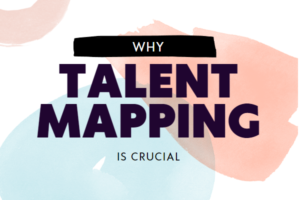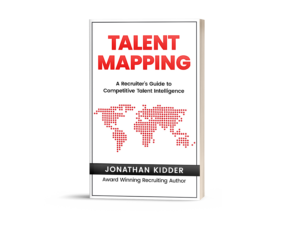
Talent mapping involves gathering data, reviewing research, and analyzing labor market analytics to gain insights into demographics, competition, and current job markets. Recruiters pull this information from a number of resources including labor market tools and compile it into a Talent Mapping report to present to HR leadership and hiring managers. Based on this report, they then develop a more targeted talent sourcing strategy and plan. Talent mapping analytics provide valuable information that can improve a company’s sourcing efforts by identifying qualified candidates more effectively. The internet is a rich source of information that can assist with efficient talent sourcing.
Recruiting without a talent map?
Recruiting without labor market analytics and data can lead to inefficiencies and difficulties in attracting qualified candidates. Without data on the labor market and its trends, recruiters may struggle to understand the competitive landscape and may not be able to effectively target the right candidates. Additionally, without data on salaries, demand for certain skills, and other factors, recruiters may have difficulty making informed decisions about compensation and benefits packages. Recruiting without labor market data and analytics also risks missing out on valuable insights that could help to improve the hiring process and attract the best candidates for the job.
How sourcing blind can impact your team:
The term “sourcing blind” means that your team does not have a talent sourcing strategy in place. A company can be negatively impacted if it does not fill its roles with the right candidates in several ways:
Decreased Productivity: Hiring the wrong candidate can lead to decreased productivity and a lack of motivation, causing further strain on the rest of the team.
Increased Turnover: If the wrong candidate is hired, they are more likely to leave the company sooner, leading to increased turnover and the costs associated with repeatedly filling the same role.
Damage to Company Culture and Image: A misaligned hire can also harm the company culture and morale of the team, impacting overall job satisfaction and employee engagement.
Missed Opportunities: Hiring the wrong candidate can lead to missed opportunities for growth and progress, as the role will not be filled by someone who can effectively contribute to the company’s success.
Increased Costs: The process of recruiting, hiring, and training a new candidate can be time-consuming and costly, particularly if the wrong person is hired and must be replaced.
How Talent Mapping can enhance your sourcing strategy?
Gain Market Insights: Data can provide a clear picture of the local labor market, helping you make informed decisions when hiring.
Candidate Availability: Data can give you an understanding of the number of potential applicants in the market, allowing you to adjust your hiring strategies accordingly.
Salary Trends: Know the average salary range for your target roles, ensuring that you are offering competitive compensation packages to attract top talent.
Stay Ahead of Competitors: Keep track of what your competitors are doing, including their hiring plans, to stay ahead in the talent acquisition game.
Job Title Analysis: Data can highlight the different job titles and skill sets used by other companies, allowing you to better target the right talent.
Evidence-based Recommendations: Use the data to guide your discussions with hiring managers, providing them with a comprehensive view of the talent market and the best strategies to attract the right candidates.
By incorporating talent analytics into your sourcing strategy, you can make informed decisions, improve your hiring processes, and ultimately attract top talent to your organization.
Check out my latest publication: Talent Mapping
Are you a recruiting or sourcing professional looking to use data and competitive intelligence to create a Talent Sourcing strategy?
With this market research data you will be able to understand: locations, demographics, competitors, industry trends, universities or colleges graduation rates, average comp-salaries, and much more.
This book will cover how to create a talent map from start to finish. How to pull market demographic data from free as well as paid resources. Then finally how to present your talent mapping and talent sourcing plans to your hiring manager.
Who should read this book:
- North American based Talent Acquisition teams.
- HR Business Partners, Recruiting Managers, Talent Sourcers, and Recruiters.
- Sourcers looking to understand foundational talent mapping data intelligence.
- Professionals looking to use talent mapping data to create a talent sourcing strategy.
In Talent Mapping, you’ll learn how to:
- Understand Talent Mapping, Labor Market Analytics, & Talent Insights.
- Understand Future Workforce Hiring Needs.
- Discover your Recruiting Competition.
- Understanding Current Job Market and Other Barriers.
- Understanding Location and Education Demographic Data.
- Discover Salary and Other Pay Gaps.
- Create a Talent Sourcing Strategy.
- Setting Realistic Expectations with Hiring Managers.
Reviewing the best talent mapping resources and tools on the market:
The book goes into detail on the latest labor market tools including: Talent Neuron, CEB, LinkedIn Insights, CareerBuilder Portal, Indeed Insights, BLS.gov, Payscale, and many others!
Final Thoughts…
An effective talent mapping document and talent sourcing plan can enhance your recruitment objectives. Accurate data is vital, and it’s essential to invest time in researching the newest online resources for recruiters. The hiring industry evolves quickly, so staying informed is key to staying ahead of the competition.
(You can purchase the book here)
Recommended Reading:
How to SEO optimize job descriptions
Top recruiting authors to follow in 2023
Michael Vroman Interview
- AI Search Will Transform Talent Sourcing Forever - January 10, 2025
- Build an AI Sourcing Assistant using ChatGPT 4 - January 10, 2025
- Top Recruiting Leaders to Follow in 2025 - January 8, 2025

